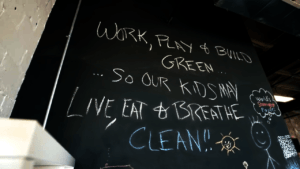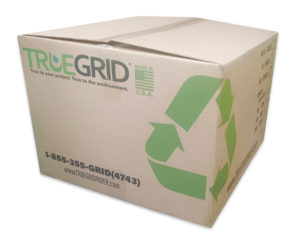It Is That Easy Going Green
You may be absolutely sure that operating your business in a manner that doesn’t hurt the environment is socially responsible and ethically necessary, but are you also sure about how it will impact your bottom line? Fortunately, with today’s technology and cultural environment, ecological sustainability actually makes good business sense.
For one, customers appreciate and are loyal to companies that care about their environmental impacts. That’s why 68 percent of internet shoppers in the U.S. cited sustainability as a significant consideration when making purchasing decisions.
For another, going green can actually be an excellent way to cut costs. Green energy efficient buildings with Leadership in Energy and Environmental Design (LEED) certifications, for instance, tend to have nearly 20 percent lower maintenance costs. They’re also responsible for energy savings of a whopping $1.2 billion in the U.S.
Going green, it turns out, is not only good for the environment — it’s good for the bottom line.
3 Steps to Green
So how does a company begin walking down that permeably paved path to a greener future? Here are a few ways to get started:
- Color your culture green.

- Create a more sustainable office space.

-

TRUEGRID products are shipped in boxes made of 100% recycled materials. Examine your supply chain.
Taking a look at your supply chain is a pretty straightforward way to make a huge impact on your environmental footprint. Sustainable shipping companies are usually pretty proud of their green designations, so it shouldn’t be difficult to find a vendor who aligns with your own goals.Look for companies that make it a priority to use energy-efficient vehicles. DHL, for example, uses a mixture of electric, hybrid, and liquid propane trucks to create greener methods of transport.Packaging from vendors is also a major consideration when it comes to sustainability. The goal should be to find vendors that offer minimal, recycled packaging that still prevents anything from breaking so that you avoid the even greater environmental hit of reshipping.
Every company has the ability to go green, and every company stands to benefit from it. Taking steps like these will enhance the health of your business alongside the planet and the people who live on it.
Talk to Us Today.
Talk with an engineer or sales team member today to learn more!
24 hour quotes. FREE SHIPPING. Factory Direct Prices.
Call 1-855-355-GRID(4743)
The 3 Top Ways Construction Can Combat Flood Damage

Natural disasters are inevitable, unpredictable, and devastating, as when a recent downpour in Rainier, Oregon, caused water levels to rise six inches, severely damaging property and affecting the town’s utilities.
Weather events like these put life on hold. For the construction industry in particular, flooding washes piles of money and time down the drain along with the stormwater that can be so hard to get rid of.
However, instead of letting a flood run wild and hoping to recover once the damage is done, we can take charge in advance. We may not be able to stop flooding, but we can proactively mitigate the fallout.
What We Can Do

Today’s technology offers the construction industry a number of sustainable, effective ways to better control flooding. Each strategy analyzes where water tends to go in an area and calculates the best way to redirect it. Shifting our mindset from working against nature to working with is improving stormwater management.
Biomimicry, for example, is the concept of copying nature in design, like emulating natural tide pools and rocky shores instead of building seawalls and breakwaters on the coast. A similar solution is creating an urban wetland: green spaces in an otherwise concrete community that absorb stormwater, reducing flood levels.
Other methods include incorporating stormwater management into public design. In Rotterdam, Netherlands, the local government realized that higher walls weren’t sustainable because they didn’t give water enough room to flow. Instead of more and higher walls, the city built new plazas with fountains and gardens that double as retention ponds.

There’s also my own favorite solution: permeable paving. Pervious paving materials have open cells or pores that let stormwater infiltrate the ground. Instead of pooling on or running off a surface as with hardscapes, water can escape by absorbing through the paving.
How We Can Do It
Managing flood risk in your upcoming construction projects starts with a few simple actions:
- Bring everyone on board.
Change starts with education. All parties — engineers, homeowners, architects, and others — should be knowledgeable about flooding solutions. Houston has an invaluable initiative in the public Green Building Resource Center, where anyone can find resources on sustainably controlling floodwaters. Letting people know that solutions are available and what they are is the first step to putting them in place.
- Plan for the worst.
In construction, we’ve all learned to hope for the best but plan for the worst. Flooding is no exception. Adjust estimates if needed; your project may run a higher budget, but it will be more expensive to deal with damage retroactively. Deepen your retention ponds, secure their perimeters, and stabilize your slopes to ensure they don’t erode. None of these is a silver-bullet solution, but each one helps minimize floodwater’s effects on a structure. If you have the means, consider elevated construction. It takes some engineering, but it’s an excellent way to reduce risk long-term.
- Create better surfaces.
Slopes and ponds are good solutions, but all they really do is create somewhere else for water to sit. To maximize control over flooding, construction professionals can provide more pathways for stormwater to flow — and then escape. Permeable pavement solutions accomplish just that, so consider folding this concept into your project.
There are plenty of ways to design construction projects that minimize flood damage. Keep all parties educated and think outside the box on stormwater management. You can’t stop flooding completely, but you can leverage the resources at hand to minimize flood damage.
Talk to Us Today.
Talk with an engineer or sales team member today to learn more!
24 hour quotes. FREE SHIPPING. Factory Direct Prices.
Call 1-855-355-GRID(4743)

